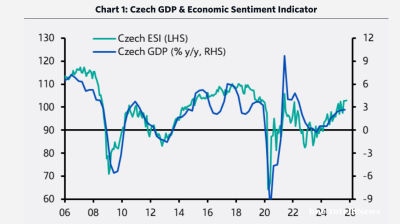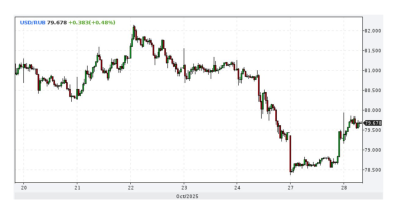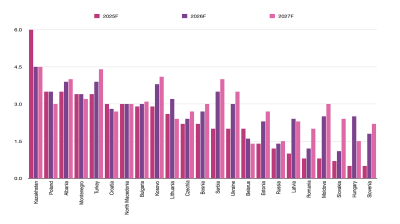The GDP of Kosovo (chart) expanded by 2.0% y/y in the second quarter of this year (Q2), to €2.31bn, according to the statistics office.
The country’s economy thus slowed down from annual growth rates of more than 3% y/y over the past three quarters and even stronger growth during 2021.
The outlook remains moderate, as the EU and US introduced so-called ‘punitive measures’ in direct response to the EU's evaluation that Kosovo had not undertaken the required actions to ease tensions in its northern region.
The International Monetary Fund (IMF) expressed concern on August 9 that the temporary measures imposed by the US and EU on Kosovo could potentially impede foreign direct investment and overall economic development if they continue for an extended period.
The statement was issued after an IMF team, led by Gabriel Di Bella, visited Pristina from July 31 to August 4.
In June, the World Bank affirmed Kosovo’s 3.7% GDP growth forecast for 2023.
The economic activities that had growth in the second quarter this year were: arts, entertainment and leisure, activities of production of goods for households' own use and other services (5.77%); scientific, professional and technical activities; administrative and support services activities (5.05% ); financial and insurance activities (3.66%); agriculture, forestry and fishing (2.81%); construction (2.70%); wholesale and retail trade; repair of vehicles and motorcycles; transportation and storage; accommodation and food service activities (2.38% ); real estate activities (2.15%); and information and communication (2.02%).
The economic activities that decreased in the quarter were: public administration, social security, education and health (-0.76%); extraction, processing industry; electricity, gas, steam and air supply; water supply; waste treatment and management activities, and rehabilitation (-2.03%).
The GDP components according to the expenditure method that had an increase were: export of services (13.62%); import of goods and services (6.29%); final consumption expenditure of the government (3.96%); final consumption expenses of households (3.68%); and gross capital formation (2.04%).
At the same time, there was a decrease in the export of goods (-10.67% ).

Data

Russia’s manufacturing PMI falls to its lowest level since May 2022 in October
Russia’s manufacturing sector saw a deeper contraction in October, with output, new orders, and business confidence all weakening, according to the latest Purchasing Managers’ Index (PMI) data from S&P Global, published on November 1.

Czech growth accelerates as domestic demand-side pressure builds
The Czech economy delivered an unexpected acceleration in the third quarter, marking a clear shift from its earlier position as a regional underperformer to one of Central and Eastern Europe’s fastest-growing economies.

Eurobonds of Istanbul-listed Zorlu units offer attractive yields amid rating downgrades and no default expectation
Debut paper currently offering 14-15% yield.

Ruble strengthens as sanctioned oil companies repatriate cash
The Russian ruble strengthened after the Trump administration imposed oil sanctions on Russia’s leading oil companies, extending a rally that began after the Biden administration imposed oil sanctions on Russia in January.




